Why you can trust Tom's Hardware
For the best color, stick with the PXC273’s Standard picture mode and Custom color temp. They deliver reasonable color accuracy out of the box. Improvements are possible with a few adjustments.
Grayscale and Gamma Tracking
We describe our grayscale and gamma tests in detail here.
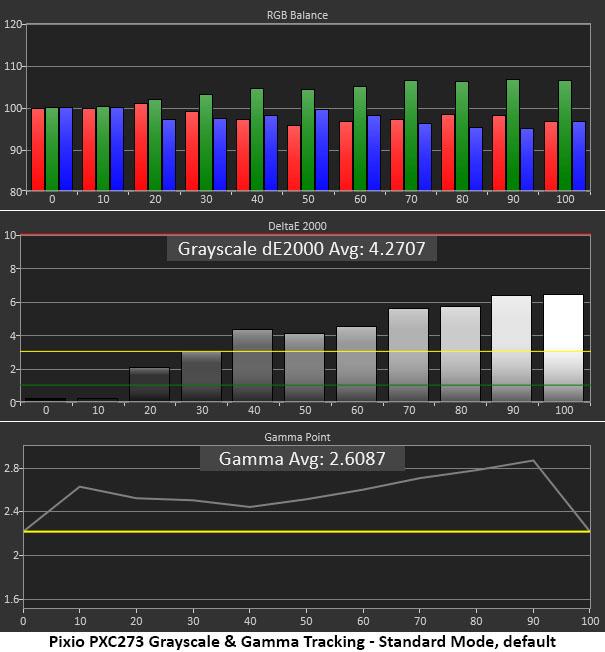
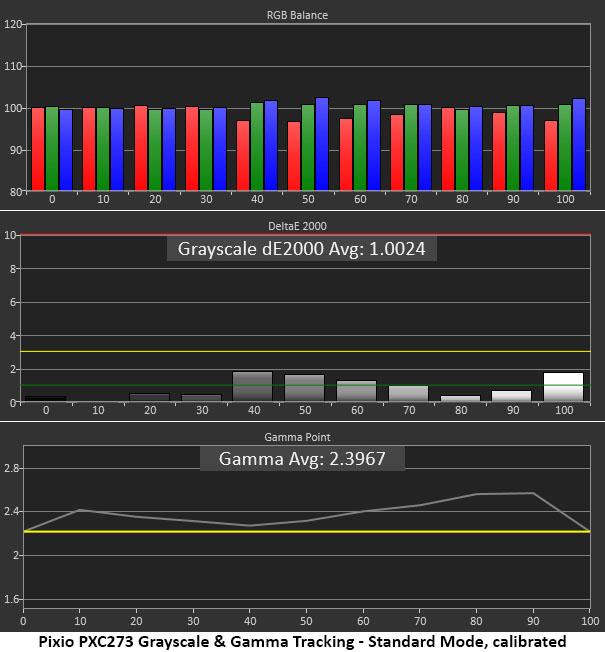
Out-of-the-box Standard mode (graph 1) has grayscale tracking running a bit green from 40% brightness and on. Given the PXC273’s price point, we can forgive this default performance. What’s more concerning is the gamma tracking. It makes the picture darker than it should be and reduces the effect of all that wonderful contrast. You can compensate somewhat by turning up the brightness, but gamma tracking closer to 2.2 would be a better solution.
Once we adjusted the gamma presets in the Adjust menu (2nd chart), we improved the curve visibly, but it was still darker than it should be. The PXC273 would have more pop if the upper brightness steps were at the correct output levels instead of slightly under. This could be fixed with a firmware update that included a more-accurate gamma preset. However, our grayscale calibration had a positive effect, with all errors moving below the visible threshold.
Comparisons
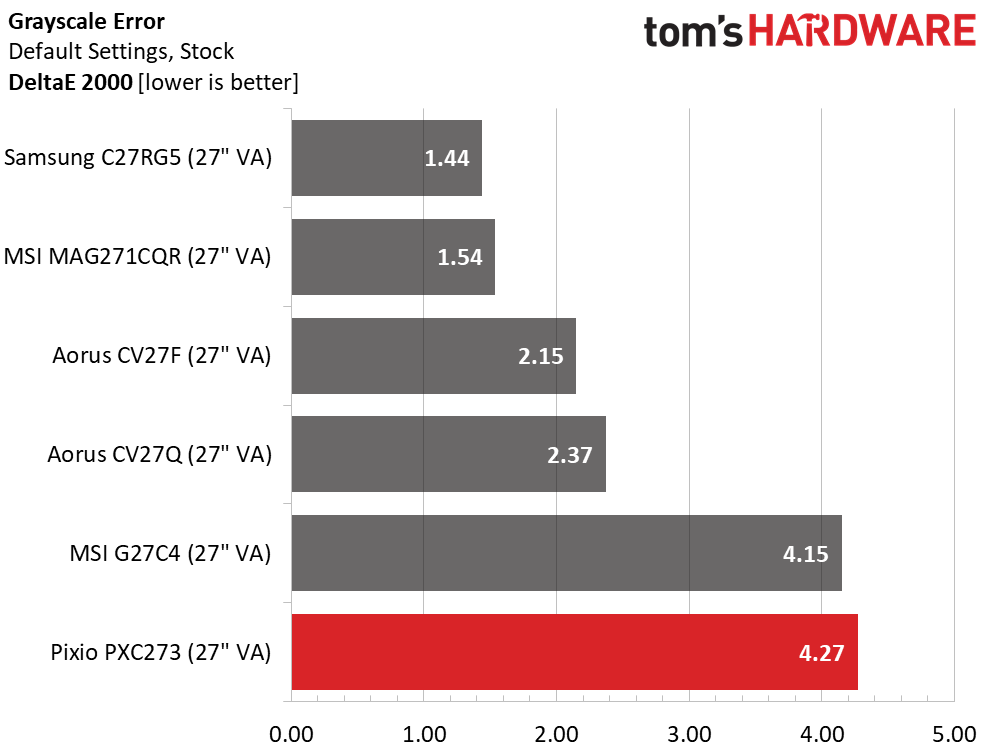
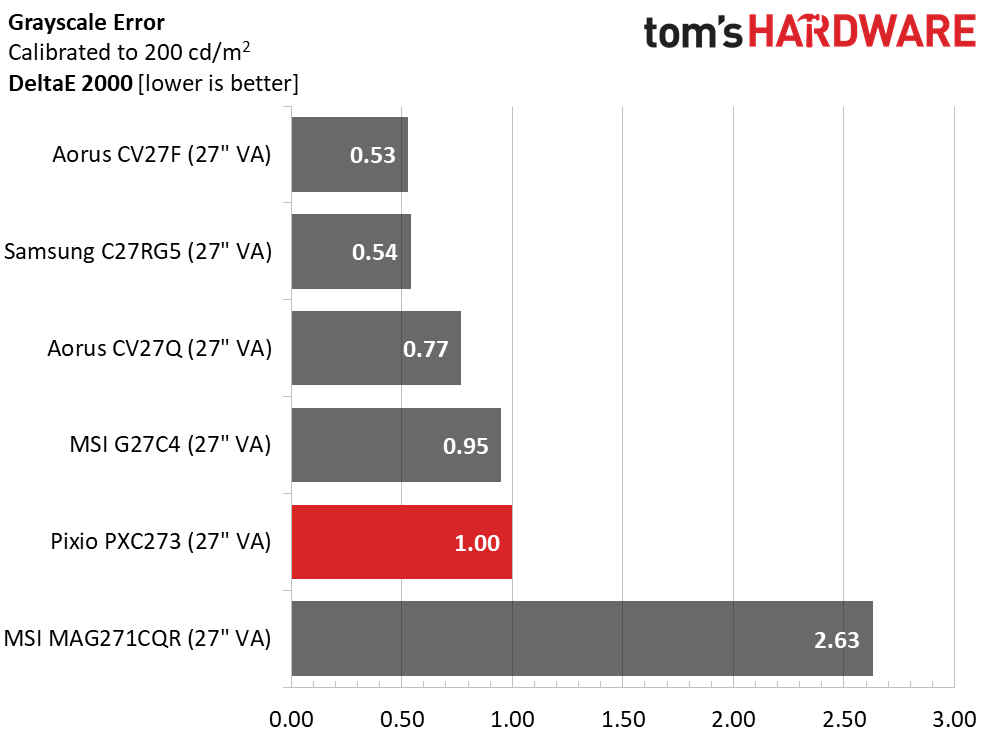

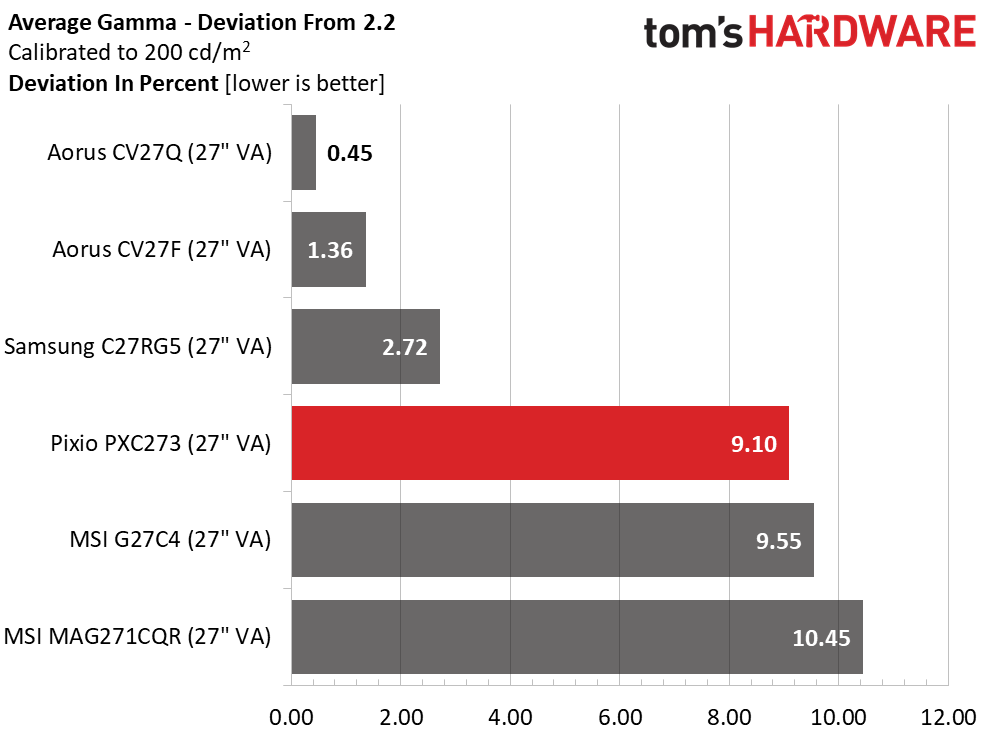
In the recent past, a 4.27 Delta E (dE) average grayscale error would be typical for a gaming monitor. But today’s displays boast better out-of-box accuracy, as evidenced by our sample group. The top four monitors in the grayscale error chart don’t require calibration. However, the PXC273 should be calibrated for the best possible picture (see our settings on page 1).
We couldn’t completely fix the PXC273’s gamma tracking with our adjustments. Changing the preset from 2 to 1 made a visible difference, but it still didn’t track as well as the two Aorus or Samsung monitors. Ultimately, we like the Pixio’s image, but it could be even better if the gamma were more accurate.
Color Gamut Accuracy
For details on our color gamut testing and volume calculations, click here.
Get Tom's Hardware's best news and in-depth reviews, straight to your inbox.
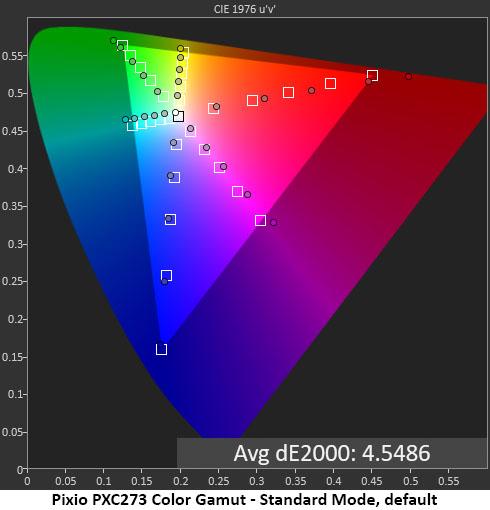
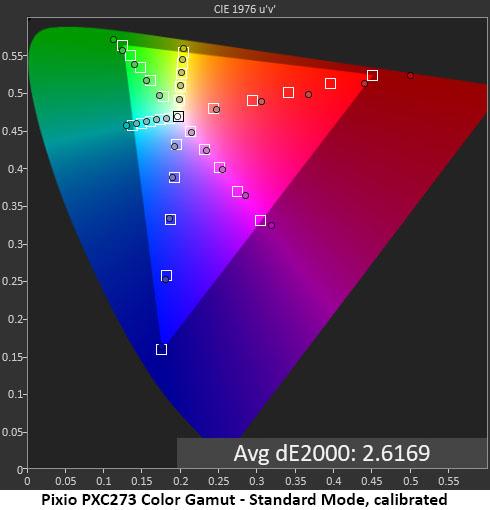
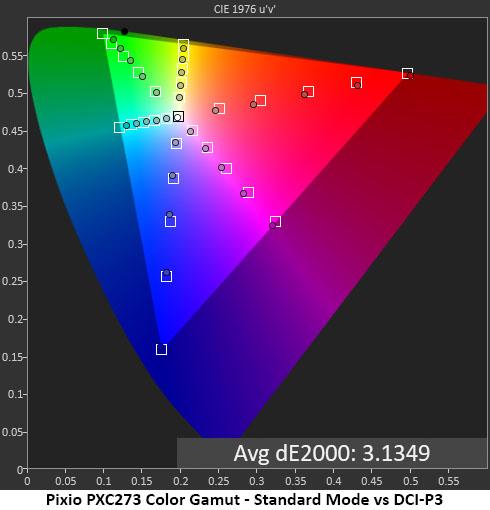
It’s obvious from the initial gamut chart that the PXC273 is a DCI monitor. All colors are oversaturated in the sRGB realm except for blue. The average error is increased by a low color luminance level, which is largely due to the high gamma values we recorded.
Calibration brought the secondary colors onto their hue targets, but the over-saturation didn’t change. If you’re looking for an accurate sRGB gaming monitor, the PXC273 is not it. But if you like a more colorful presentation, it will suit just fine. You can see in the final chart that it covers a large part of the DCI-P3 gamut, coming up short only in the green primary. Again, the average error is inflated by low color luminance. Fixing the gamma to a proper 2.2 level would address that issue.
Comparisons
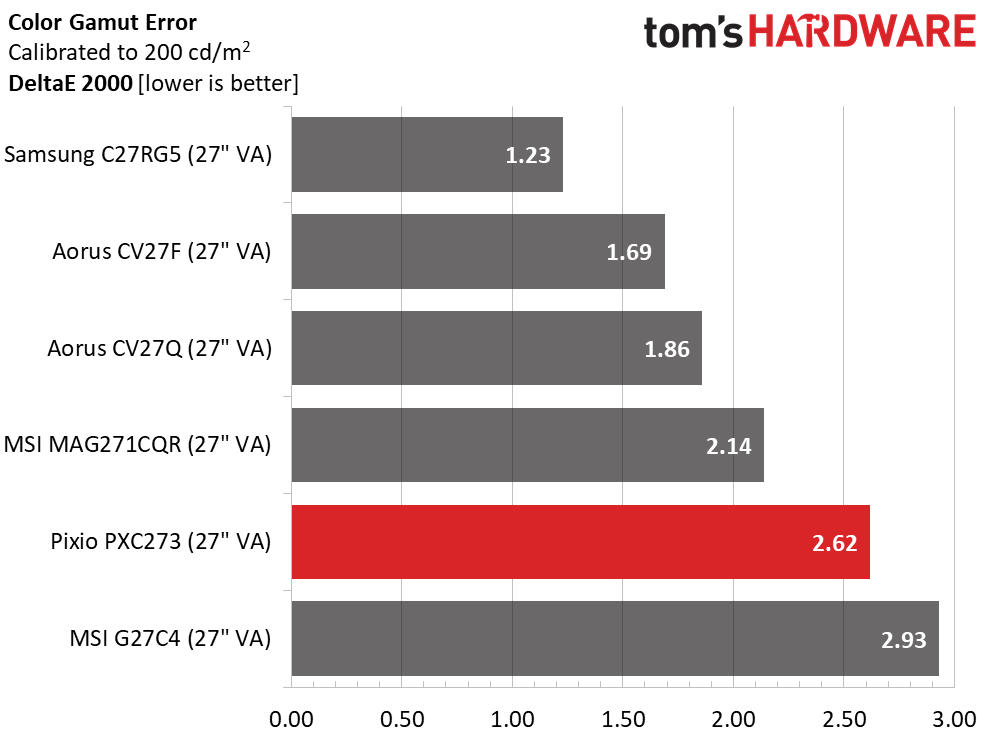

With a calibrated color error of 2.62dE average, you won’t see any major issues in the PXC273’s image presentation. Our recommended settings make things visibly better with greater image depth and a more natural look.
In the gamut volume calculation, the PXC273 turned out to have one of the largest gamuts we’ve seen in a gaming display. It covers almost 85% of DCI-P3, which is more than some HDR-capable screens, like the Aorus CV27F. With over 124% coverage of sRGB, you’ll need a custom profile to rein in the gamut if you do anything color-critical. For gaming, however, many will welcome the extra color.
MORE: Best Gaming Monitors
MORE: How We Test Monitors
MORE: All Monitor Content
Current page: Grayscale, Gamma and Color
Prev Page Brightness and Contrast Next Page Viewing Angles, Uniformity, Response and Lag
Christian Eberle is a Contributing Editor for Tom's Hardware US. He's a veteran reviewer of A/V equipment, specializing in monitors. Christian began his obsession with tech when he built his first PC in 1991, a 286 running DOS 3.0 at a blazing 12MHz. In 2006, he undertook training from the Imaging Science Foundation in video calibration and testing and thus started a passion for precise imaging that persists to this day. He is also a professional musician with a degree from the New England Conservatory as a classical bassoonist which he used to good effect as a performer with the West Point Army Band from 1987 to 2013. He enjoys watching movies and listening to high-end audio in his custom-built home theater and can be seen riding trails near his home on a race-ready ICE VTX recumbent trike. Christian enjoys the endless summer in Florida where he lives with his wife and Chihuahua and plays with orchestras around the state.